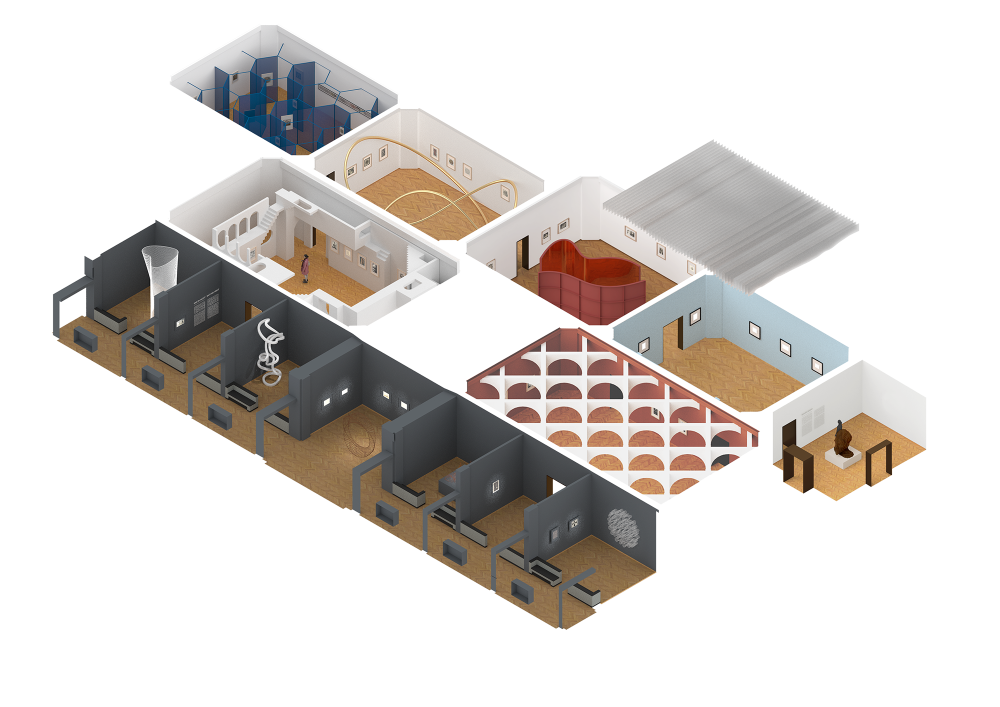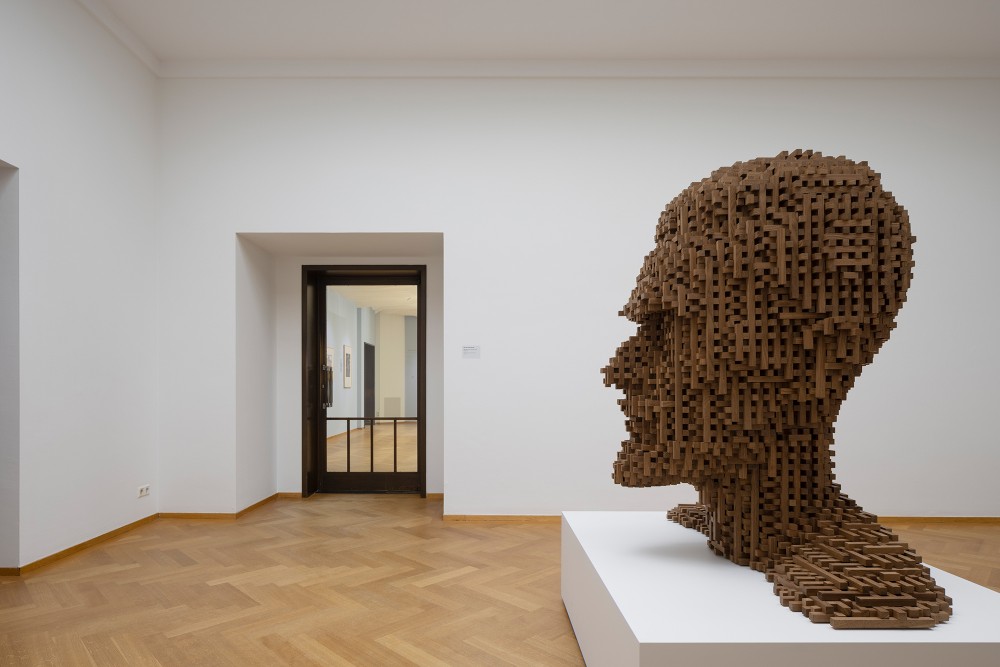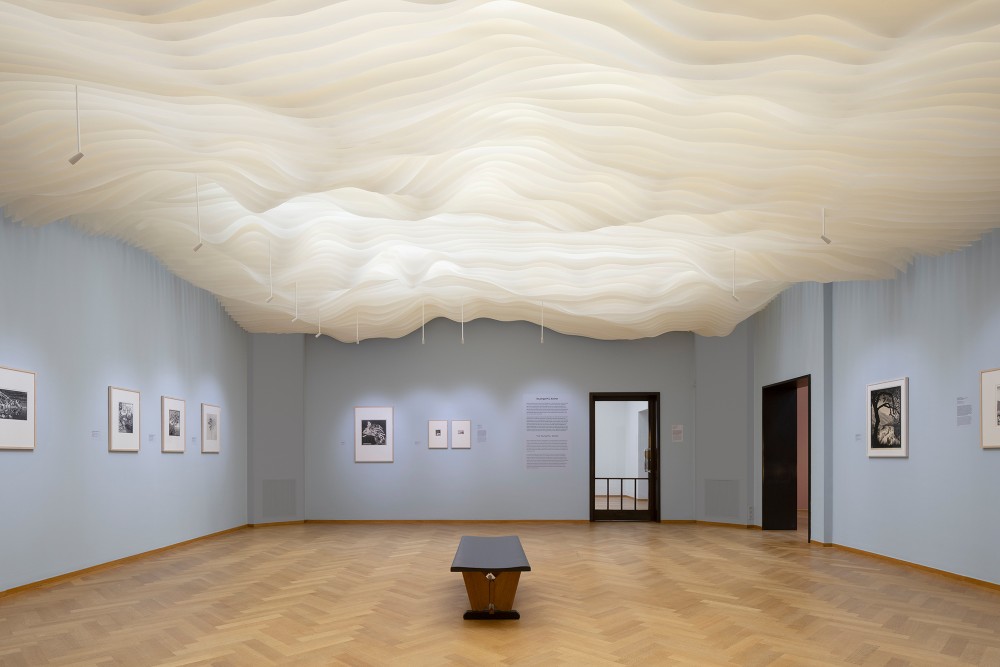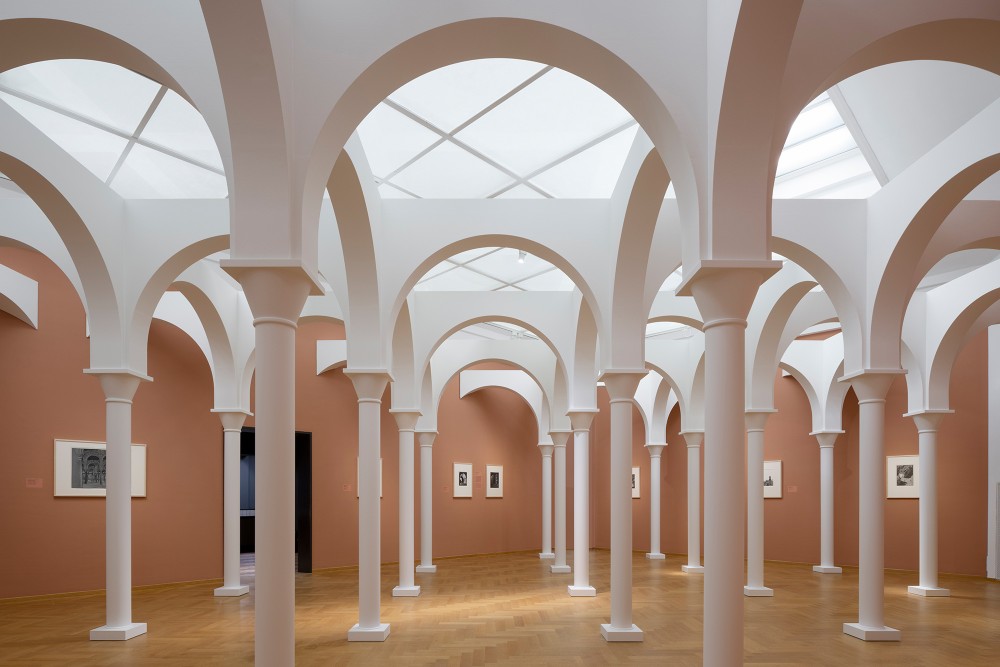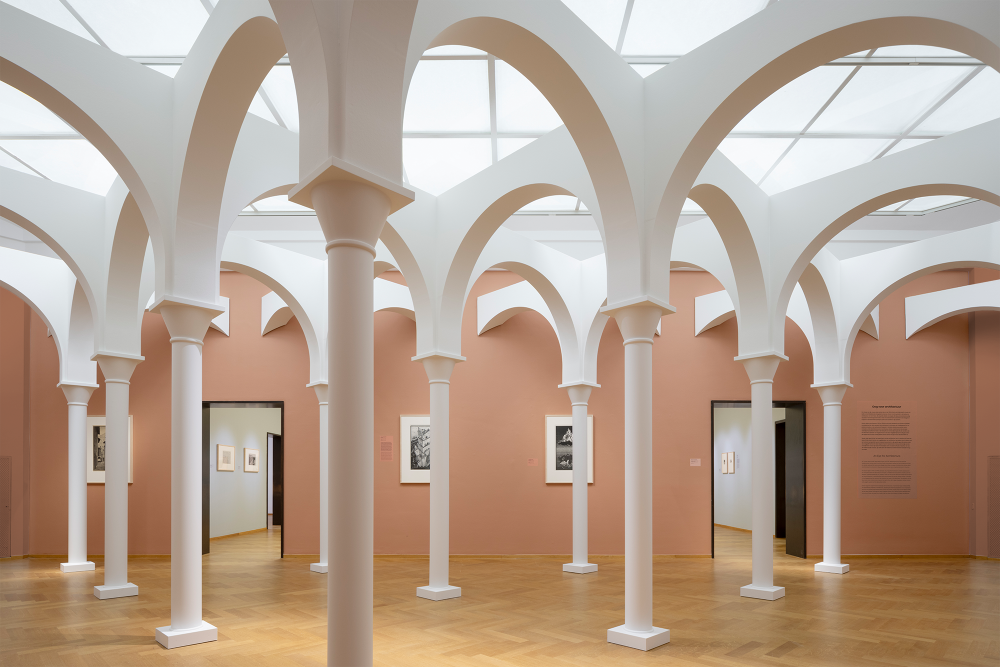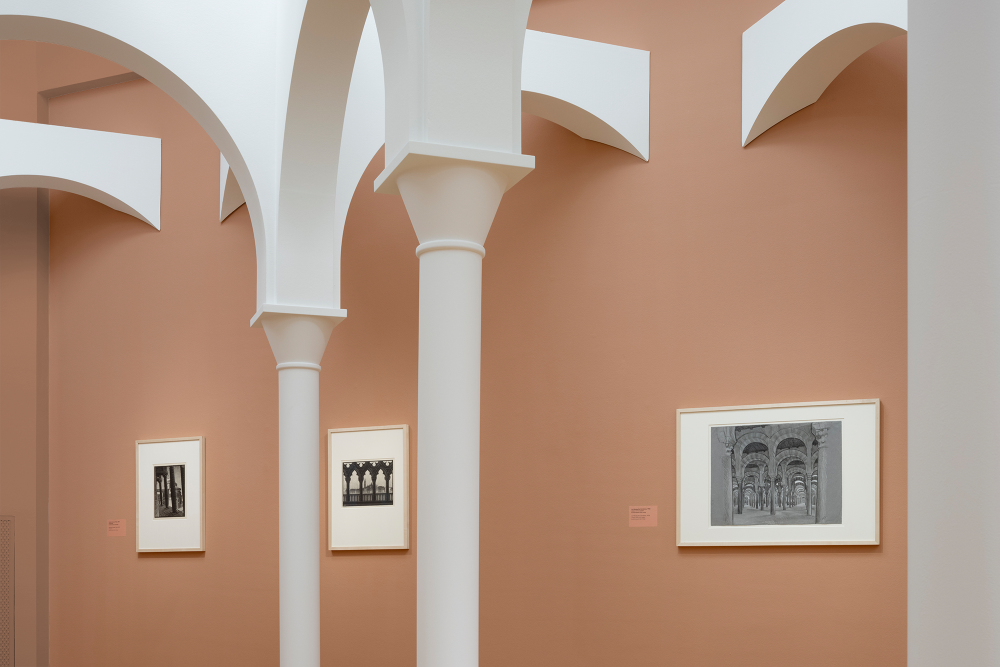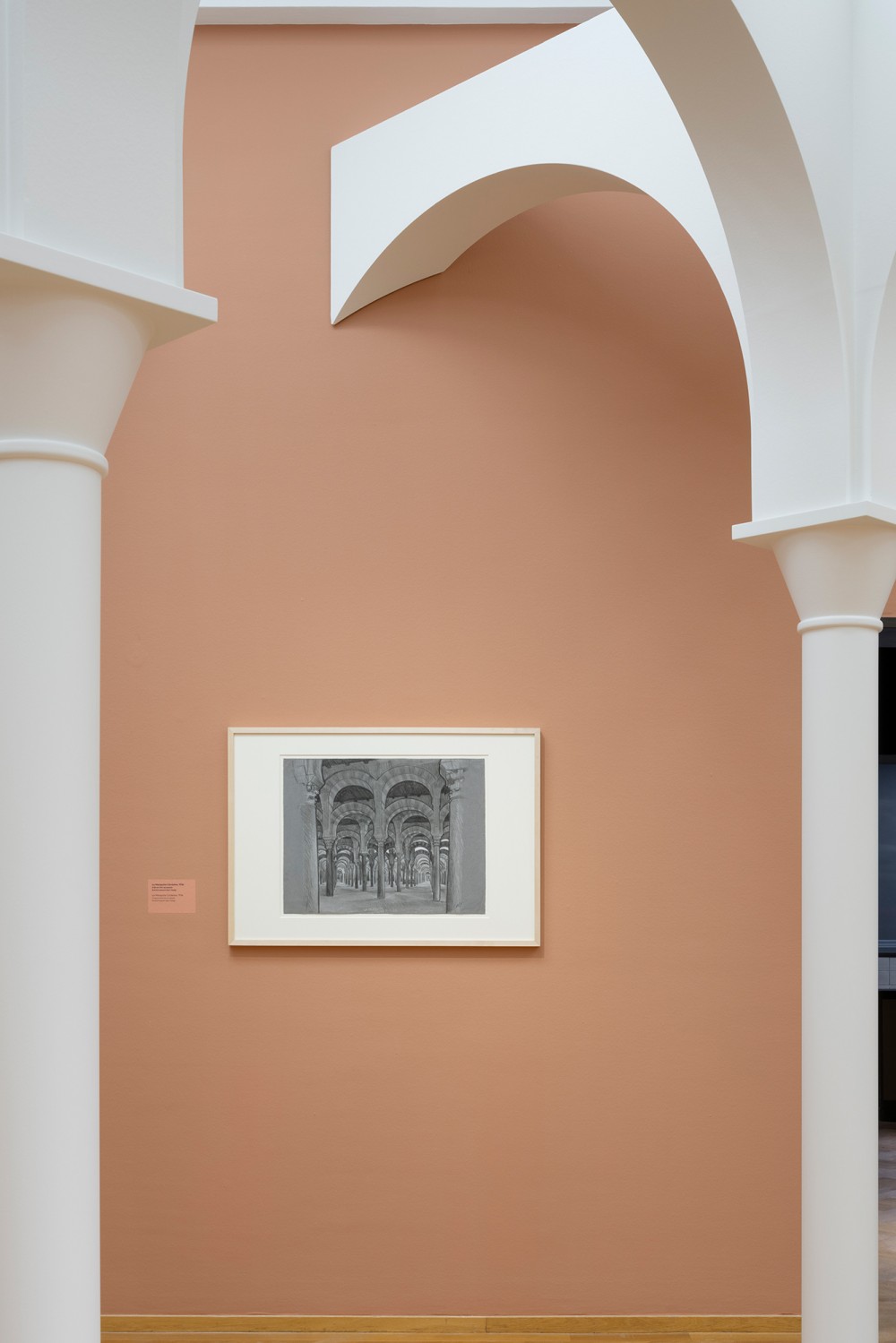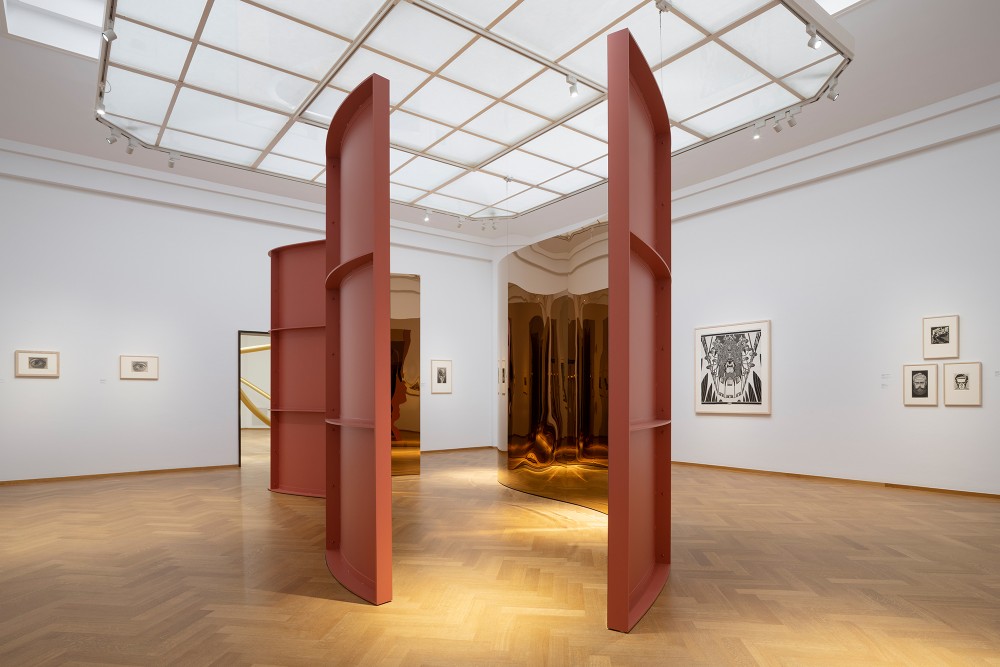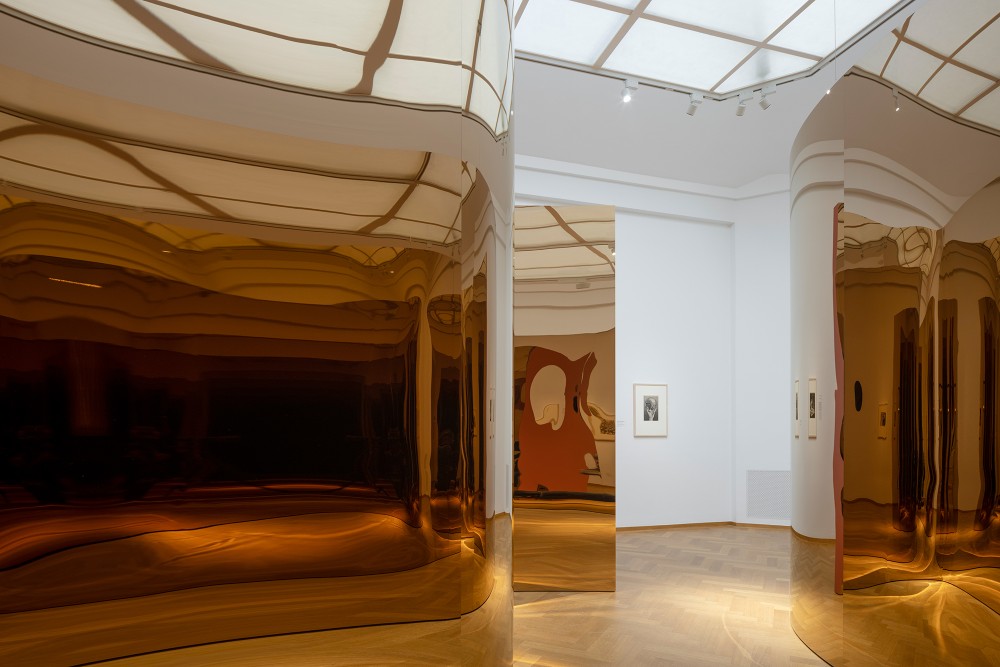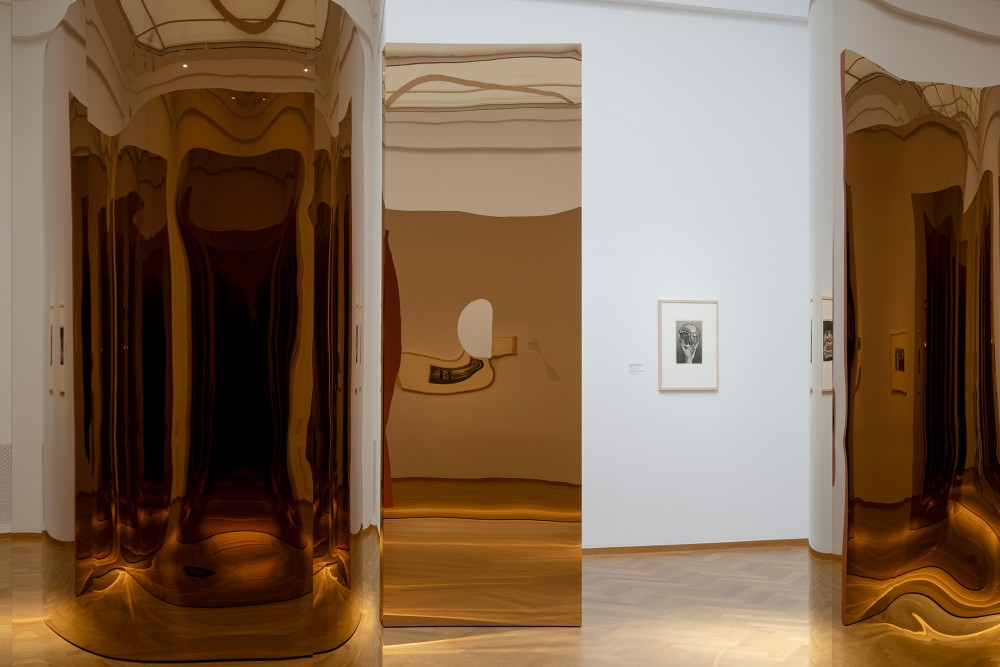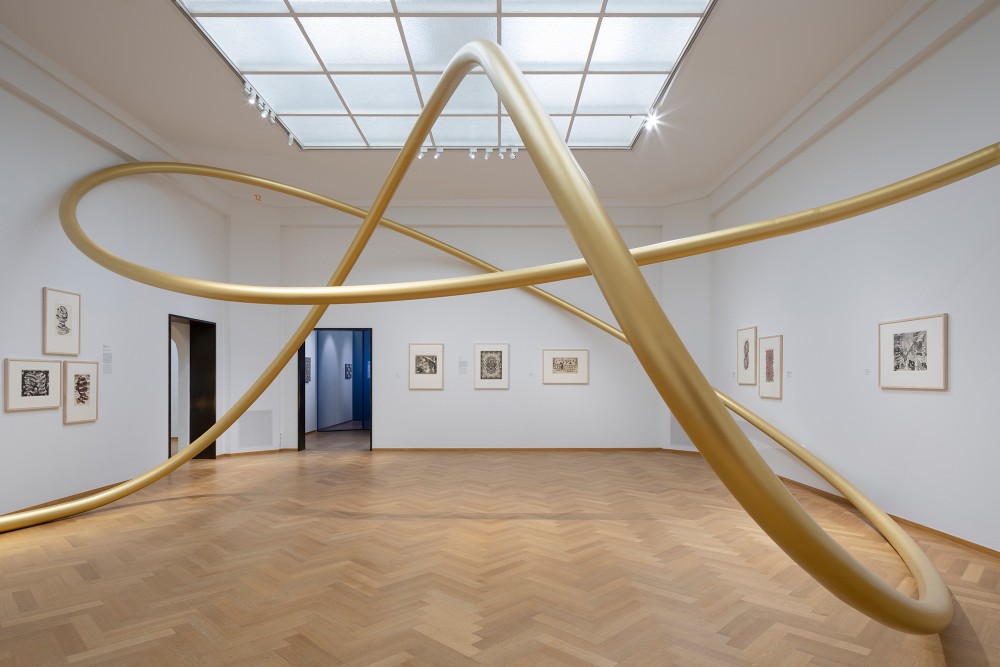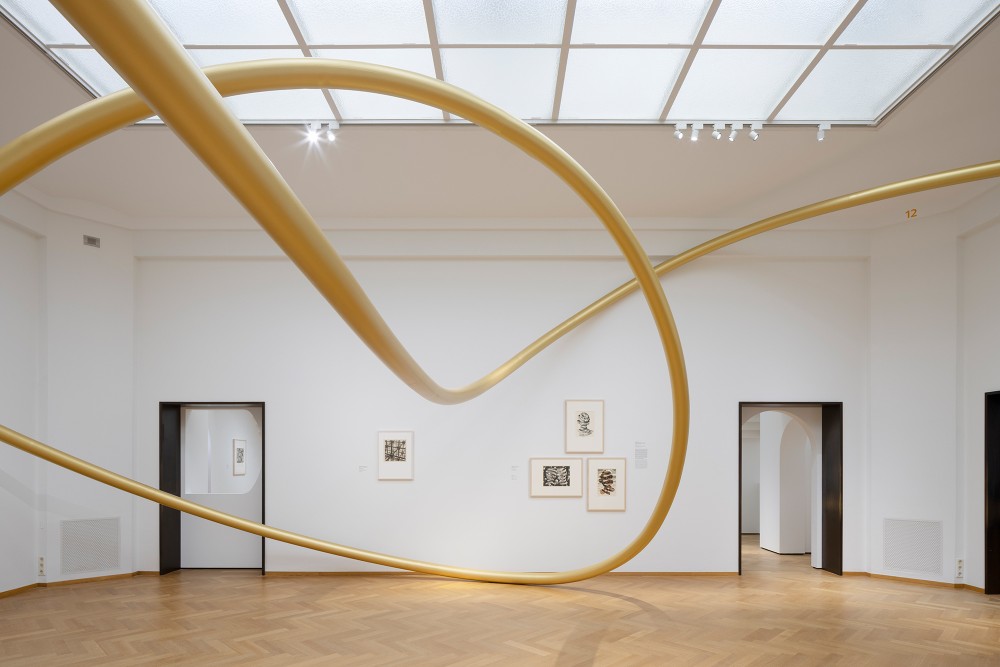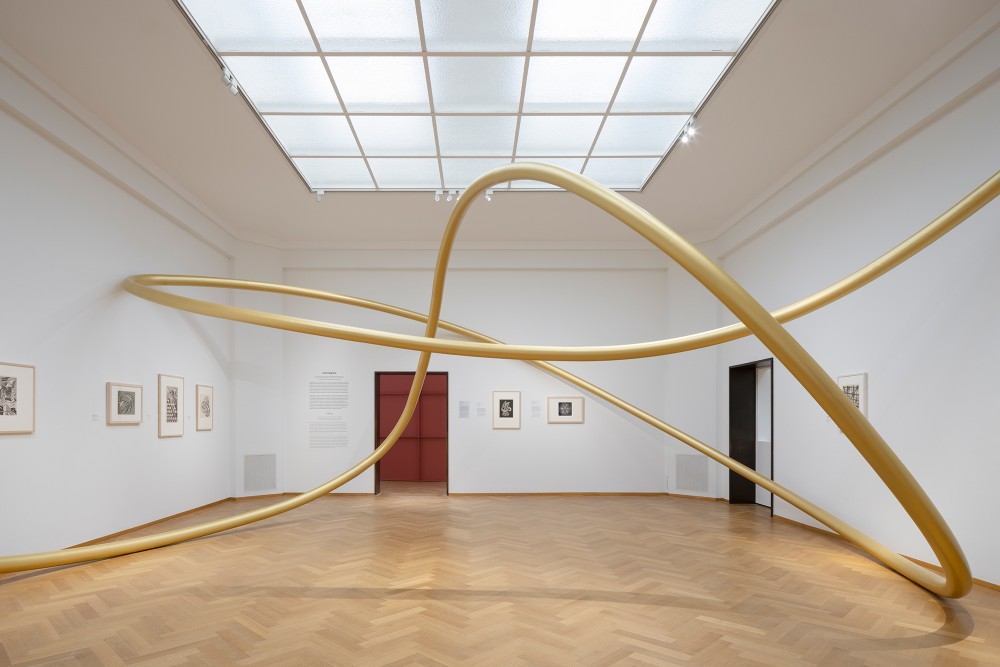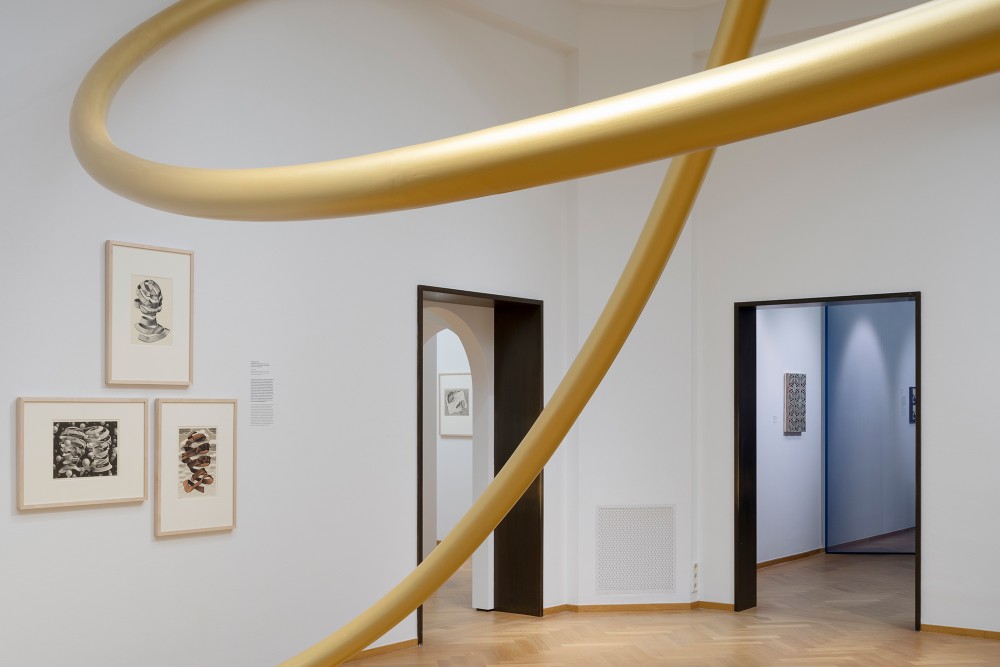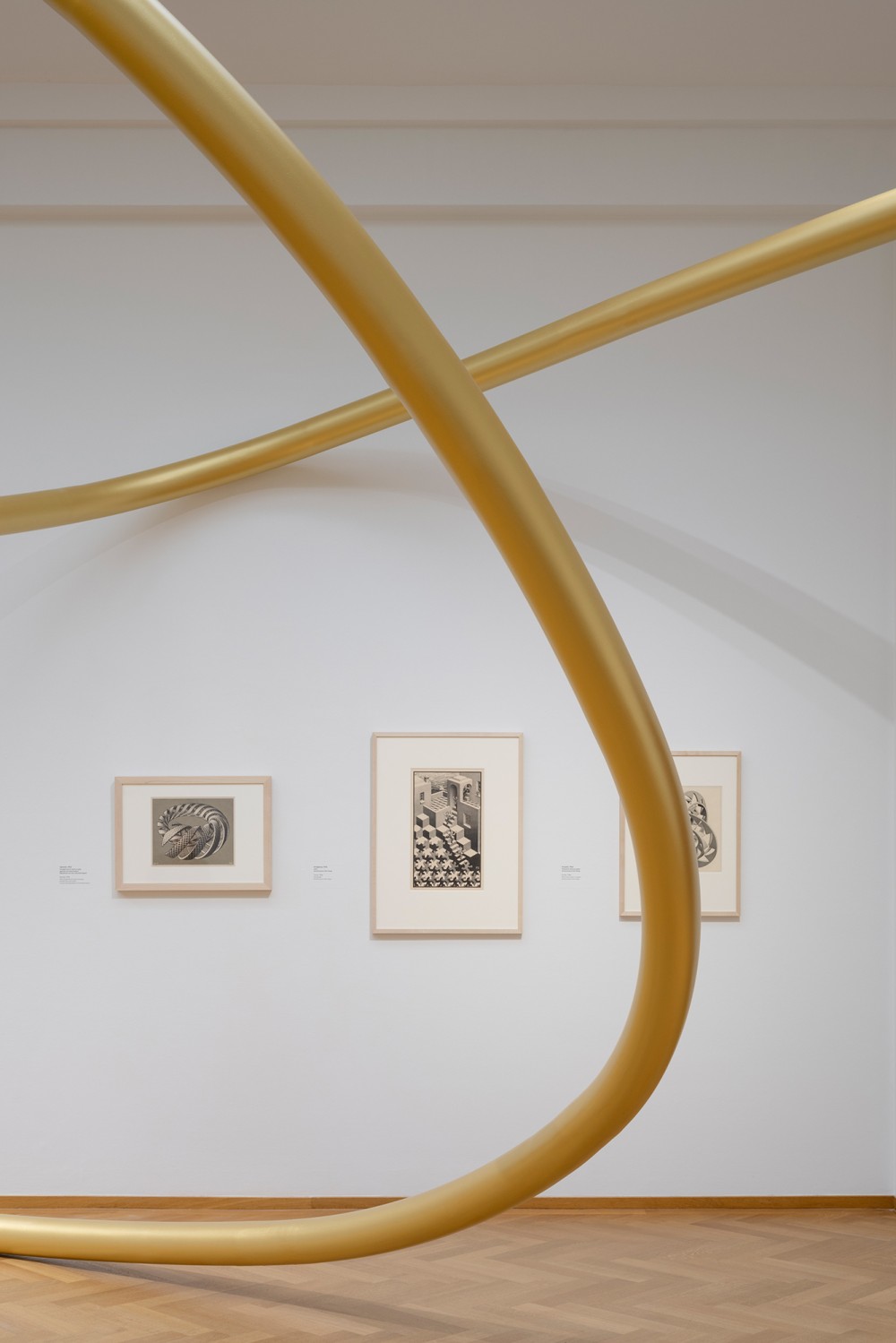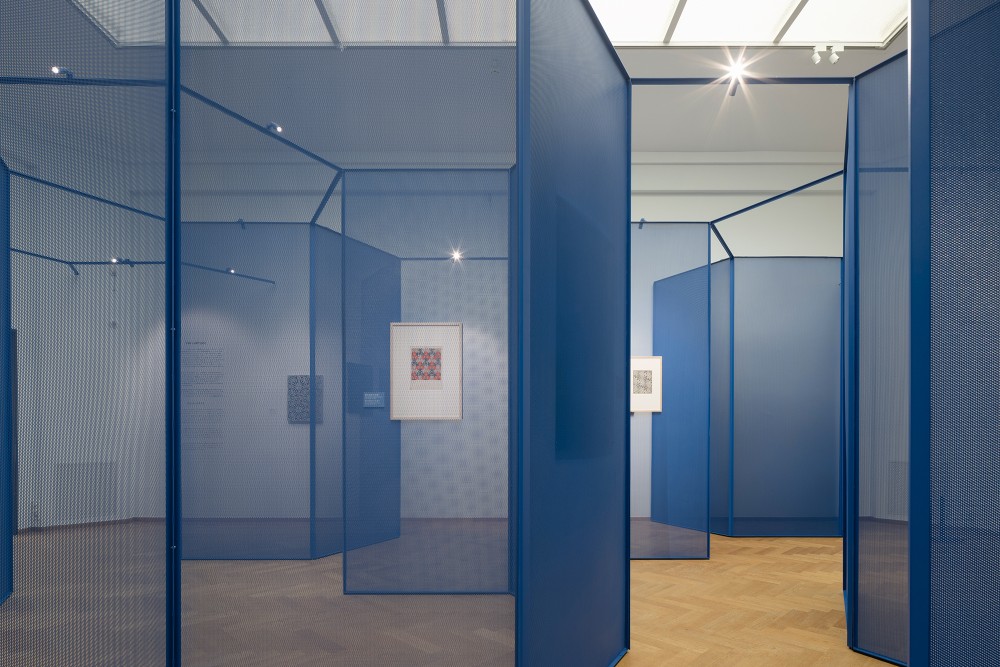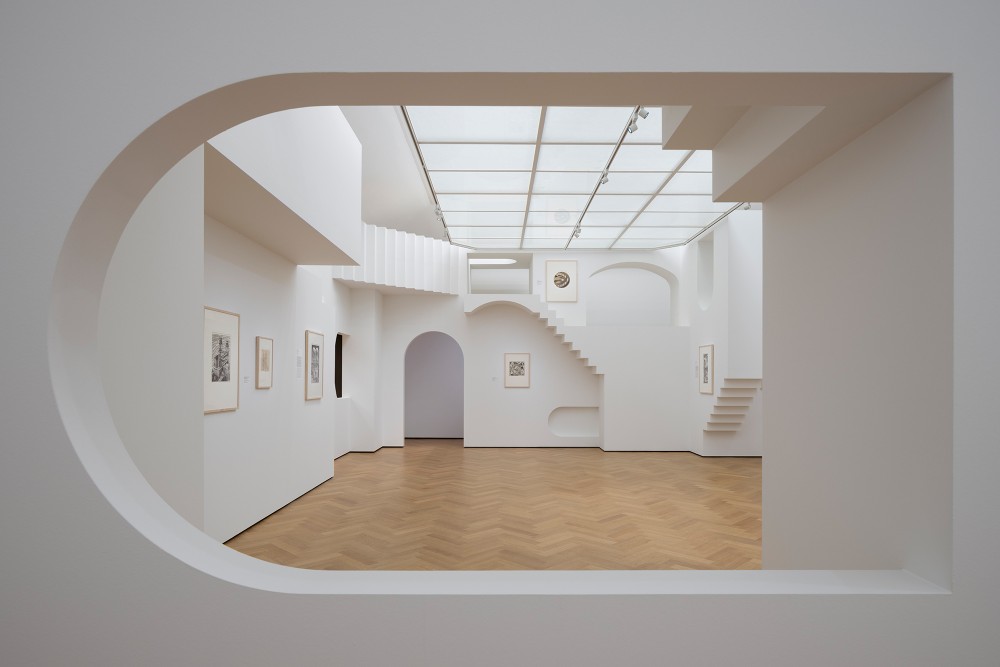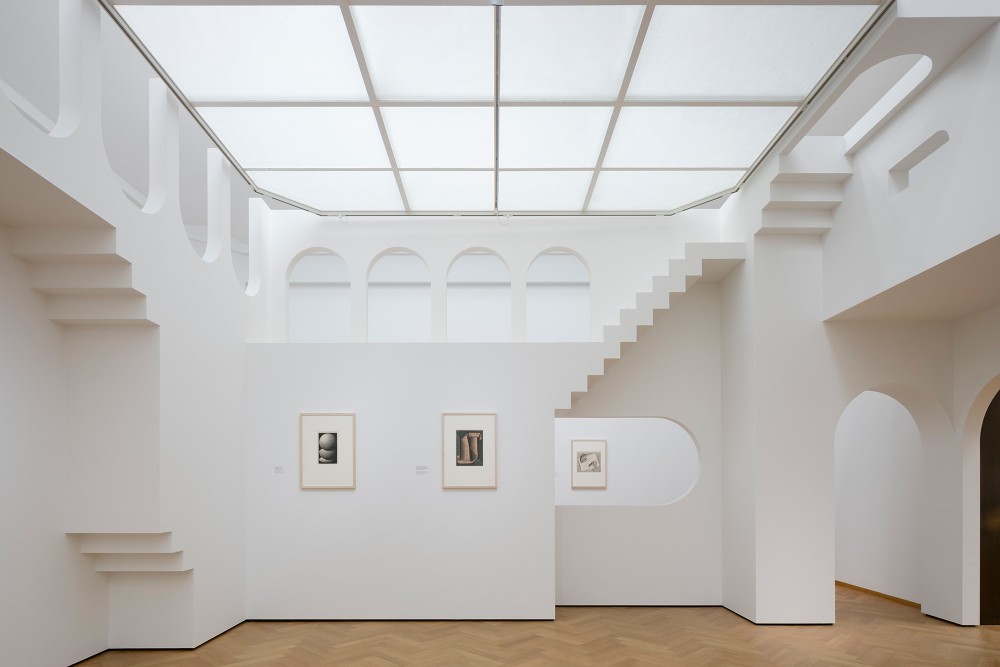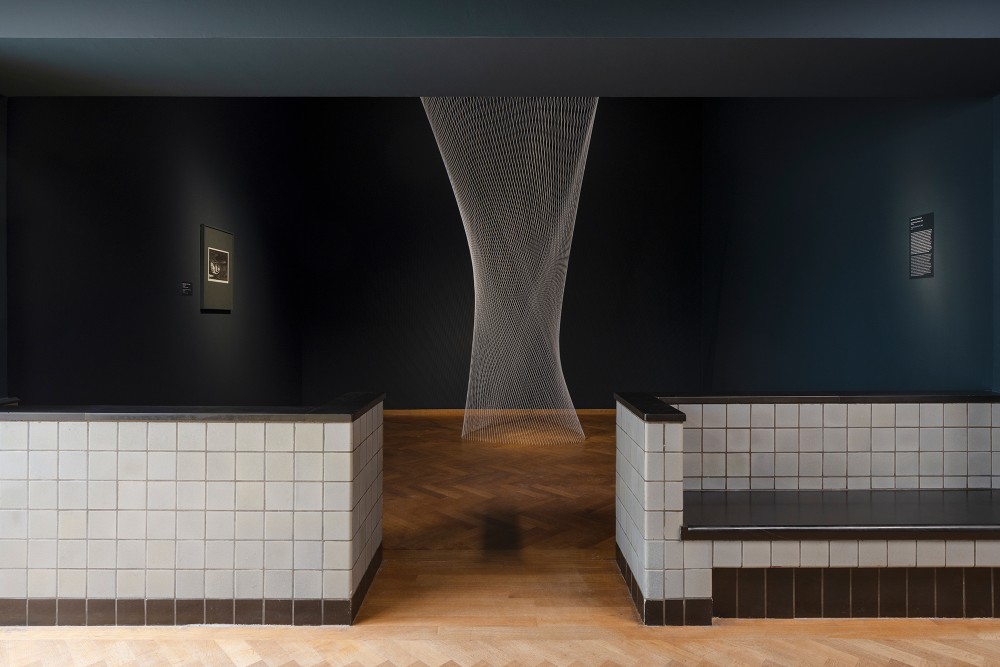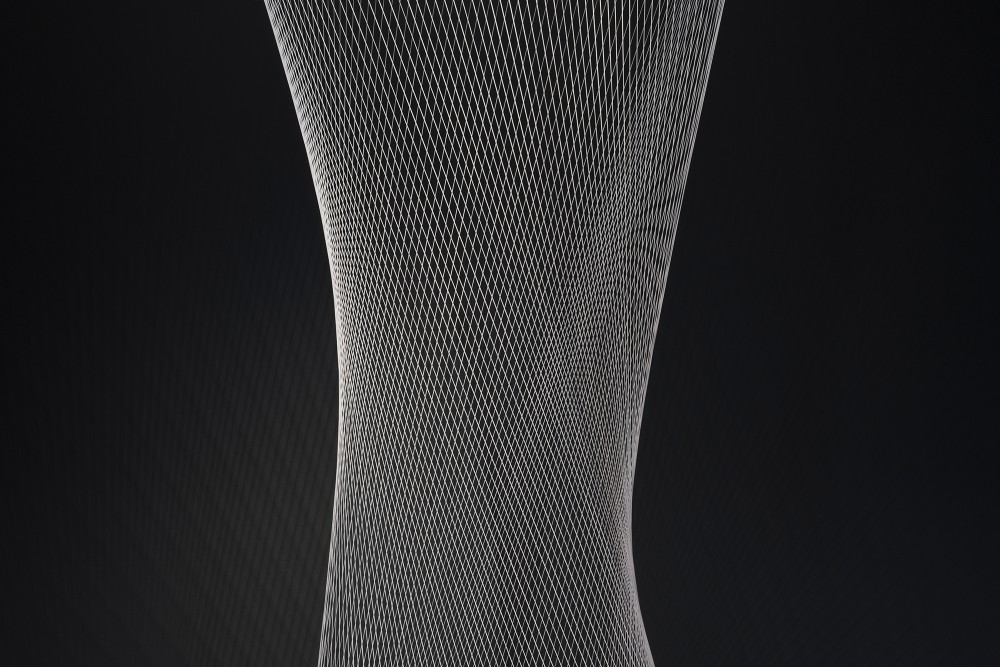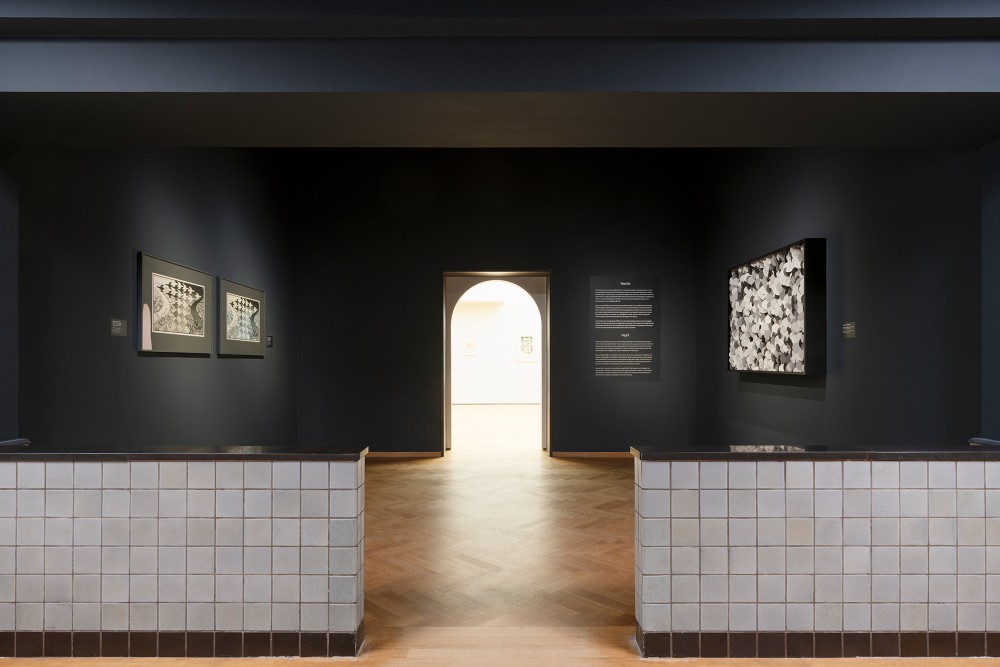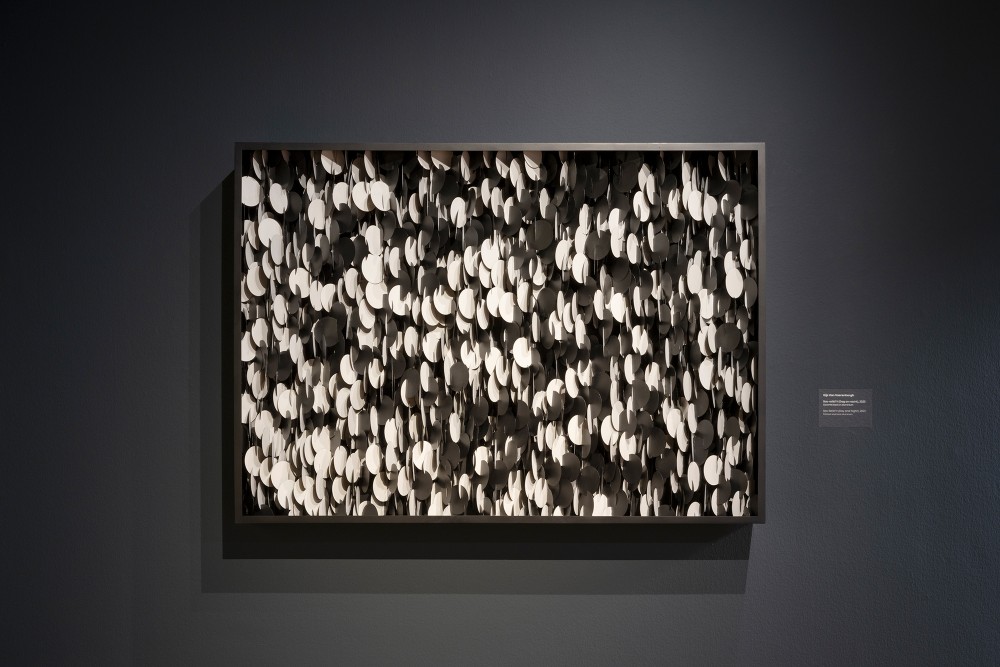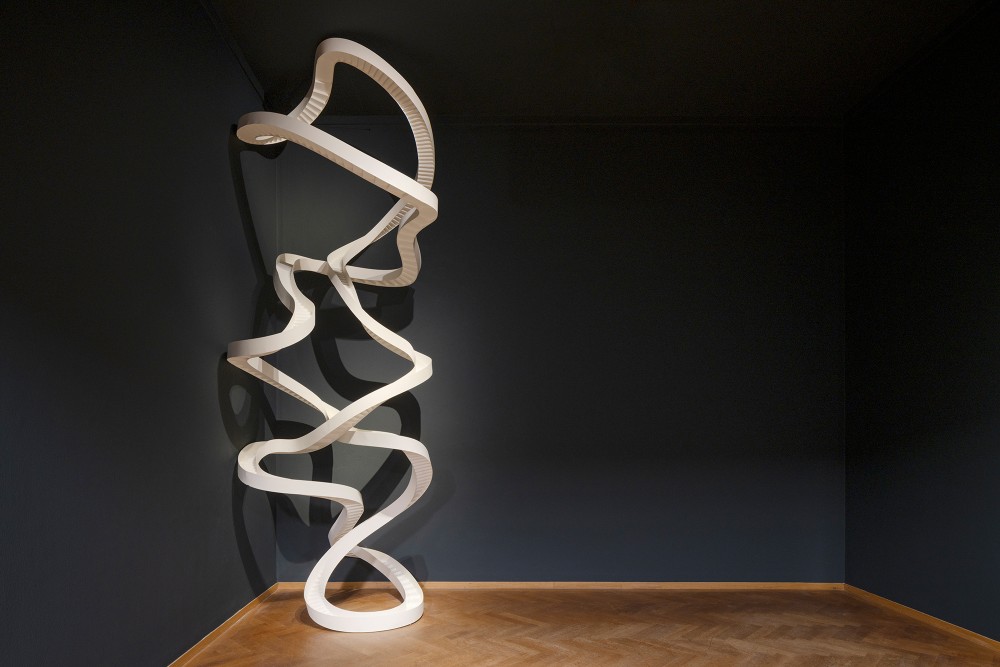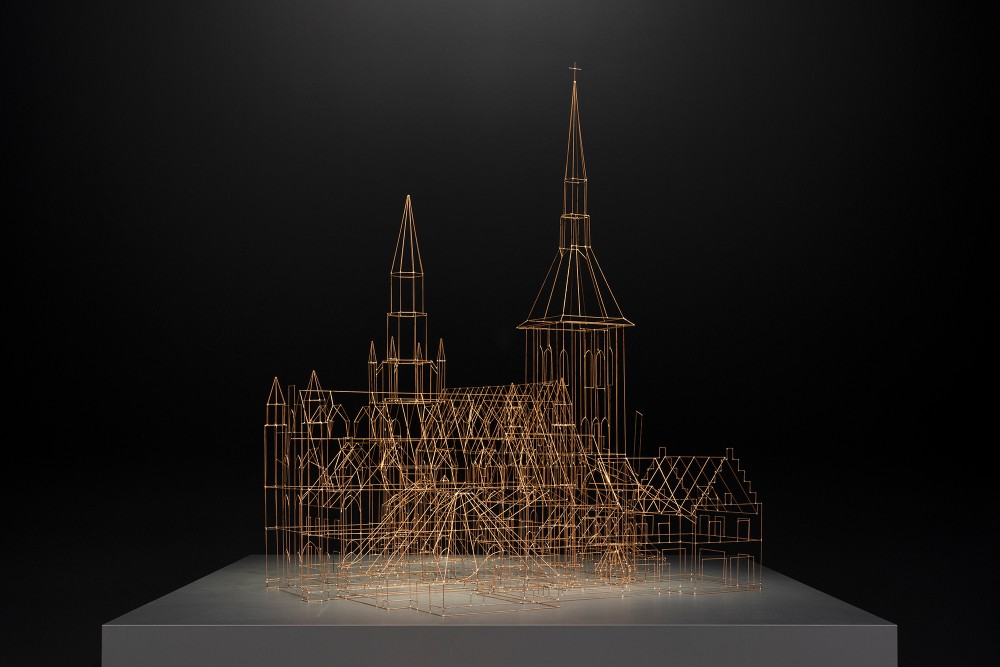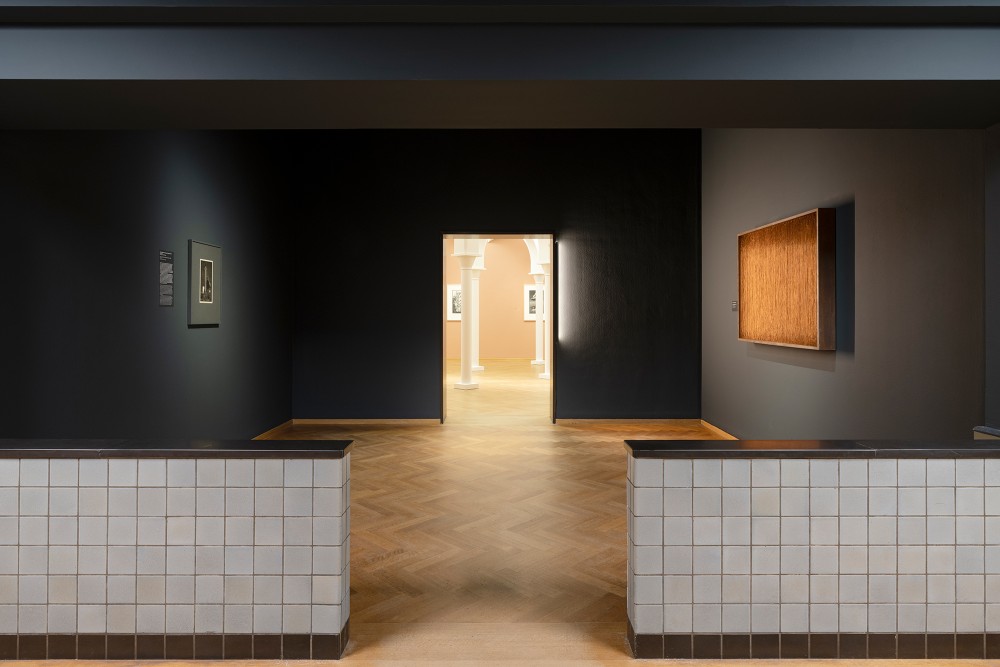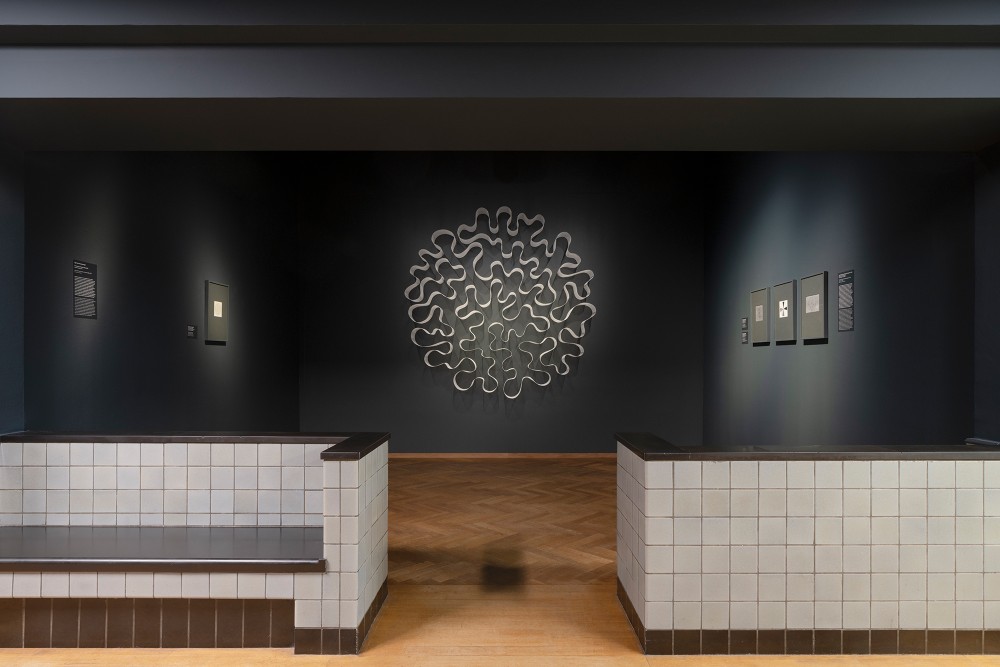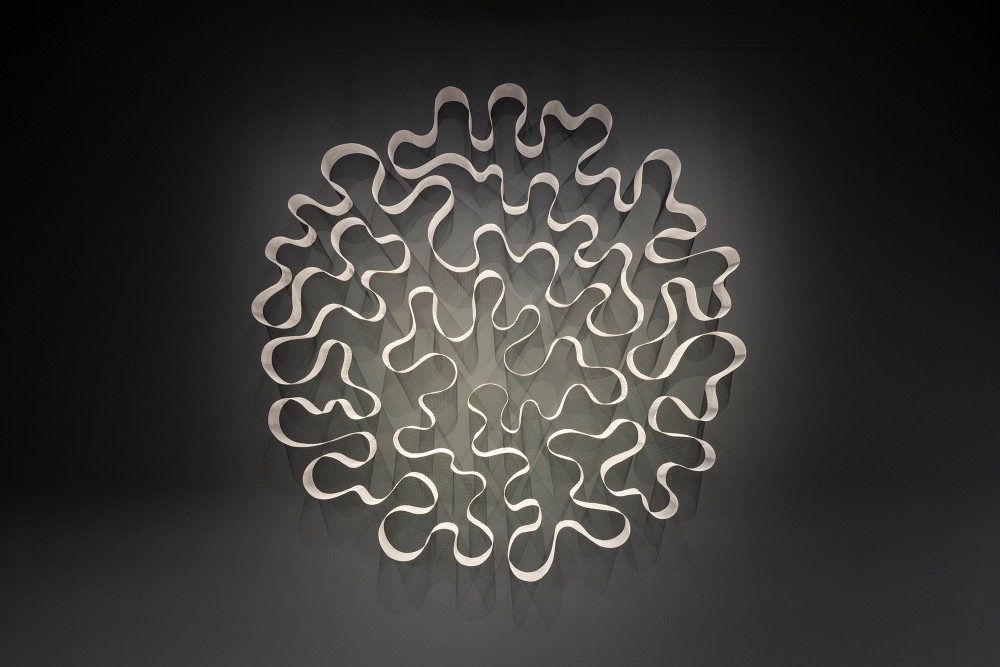Escher - Other World
For the exhibition Escher – Other World at the Kunstmuseum Den Haag, Gijs van Vaerenbergh designed both the scenography and presented their own installations in juxtaposition with Escher’s work. Gijs Van Vaerenbergh based the layout of the exhibition on Escher's beloved theme of the contrast between day and night. The first part of the exhibition, entitled ‘day’, unfolds within spacious well-lit rooms organised thematically. Here, the work of Escher and the spatial installations of Gijs Van Vaerenbergh engage in a dynamic interplay, both challenging and reinforcing each other. The second part of the exhibition, aptly named ‘night’, features particular themes showcased within cabinets, resembling tinylights in the darkness.
The central themes in the ‘day’ part are explored in thematic rooms, each featuring a spatial installation that conveys the theme in both figurative and abstract ways. These installations exist in a middle ground, bridging the realms between autonomous architectural interventions and scenography. For instance, in the Nature room, a ceiling was adorned with a cloud deck composed of numerous meticulously hand-cut paper elements. The interplay of lines generated in this manner appears to be a spatial translation of the many lines in Escher's etchings. The rhythm of the Possible Architecture is manifested through space-filling arcades, reminiscent of those in the Mezquita of Cordoba. Additionally, two curved mirrors, endlessly reflecting each other, encapsulate Escher's fascination with the concept of reflection. An immense golden knot serves as a representation of Infinity. In another instance, a transparent blue mesh was used to construct a Maze with a ground plan that draws inspiration from Escher's famous tessellations featuring fish and birds Lastly, Escher’s fantastic staircase scenes are spatially brought to life in the Impossible Architecture room.
In the ‘night’ part of the exhibition, sculptures and models of utopian architecture are juxtaposed with more intuitive and idiosyncratic elements from Escher's body of work. For instance, in ‘Village Portrait’, Gijs Van Vaerenbergh explores familiar buildings and architectural fragments, combining classic elements to create a typical village scene that is nevertheless purely fictional.
The exhibition makes clear how shared fascinations, including reflection, (maze) patterns and intricate line work, reveal the overlapping themes and affinities within both bodies of work. Furthermore, Escher's oeuvre, like that of the duo Gijs Van Vaerenbergh, is a study into the boundaries of space, landscape, perspective and illusion. While Escher conducts these explorations on paper, Gijs Van Vaerenbergh ventures into the realm of spatial installations.
COMMISSION
Kunstmuseum Den Haag
DATE
2023
LOCATION
Kunstmuseum, Den Haag (NL)
